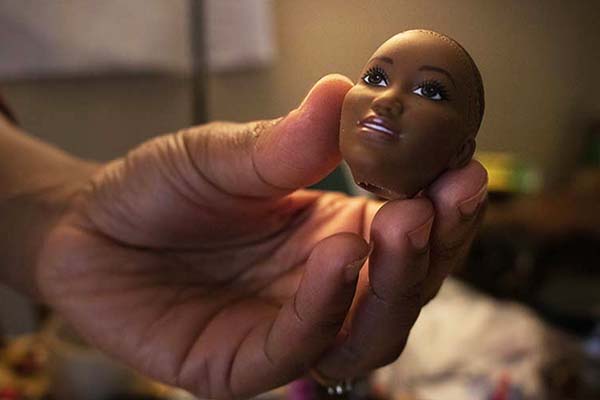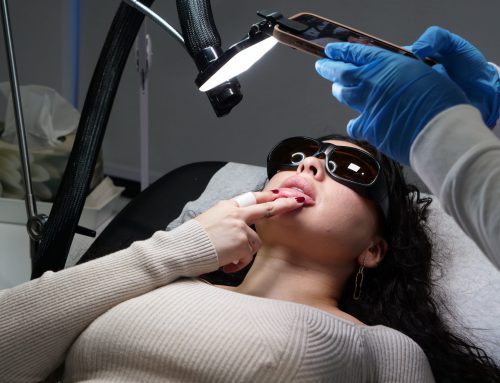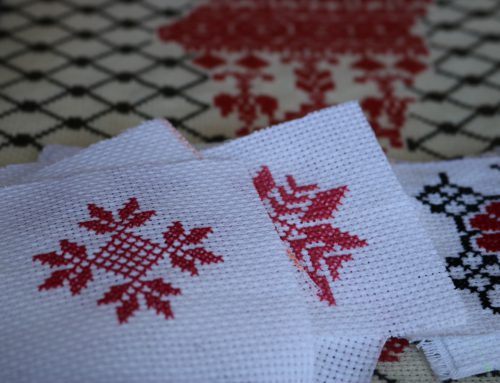BY Deborah Barrasso & Olivia Johnson
Before Orphanie Bégon-Leroy moved to Canada from Haiti in 2002, her mother brought her to a salon to relax her textured hair. While many of her friends wore their hair naturally, she still grew up with the perception that smooth, long hair was what was considered “beautiful”.
She attributes that belief to the dolls she played with.
There was one black doll in her collection full of white, blonde and blue-eyed dolls. She named it Tiffany. It had dark skin and long, straight hair—an unrealistic combination that dominated the dark-skinned doll market.
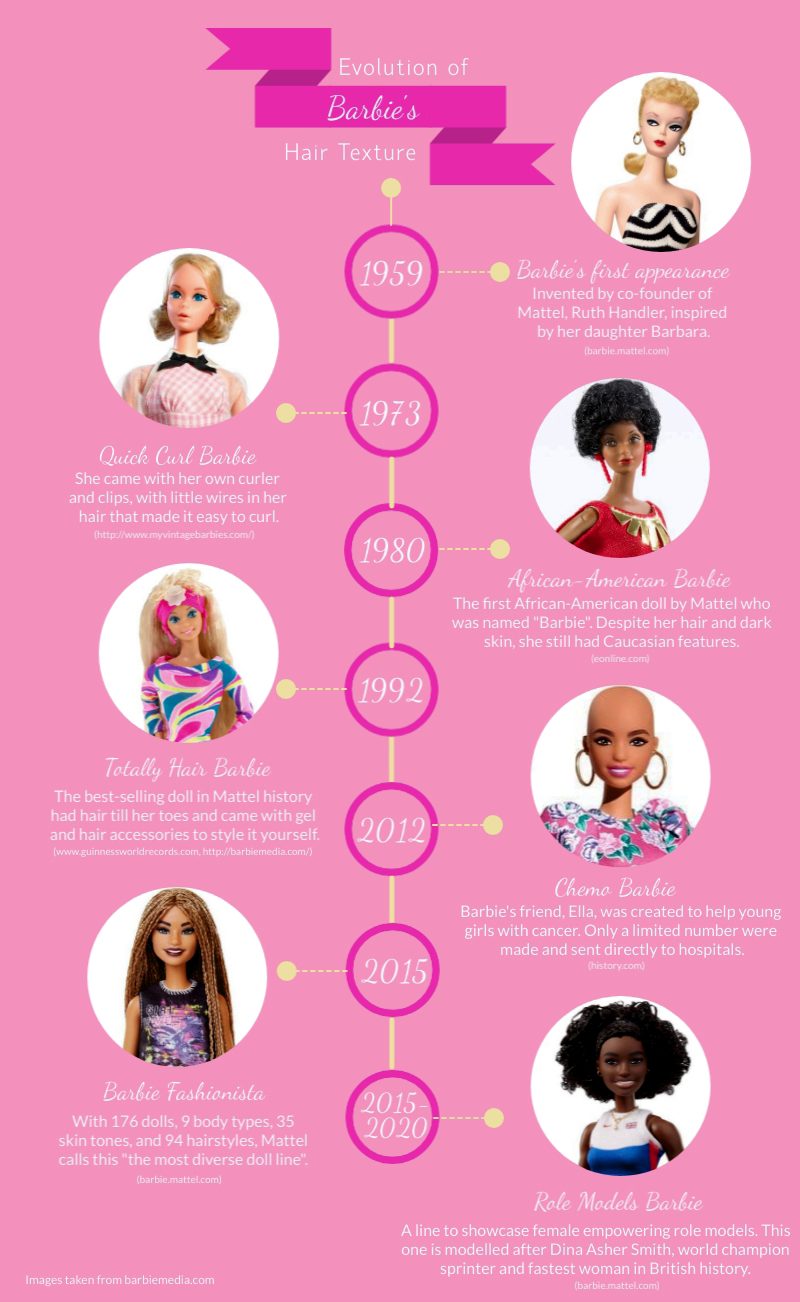
Since her creation in 1959, Barbie has seen many different hairstyles over time. As she’s become more diverse, so has her evolution of hairstyles over the years. Infographic by Deborah Barrasso.
Diverse dolls are becoming increasingly popular. In March of 2020, Mattel released a new line of role model dolls to celebrate Barbie’s 60th anniversary and International Women’s Day.
These role model dolls include figures like Madison De Rozario, a para-athlete in wheelchair racing, diving champion Wu Minxia, and world champion sprinter Dina Asher Smith. The dolls stray far away from the classic blonde hair-blue-eyes look, most associated with Barbie.
According to Cédric Dautin, the manager at the Ojeux toy store in Notre-dame-de-Grâce, there’s been a big increase in demand for diverse dolls in the past two to three years.
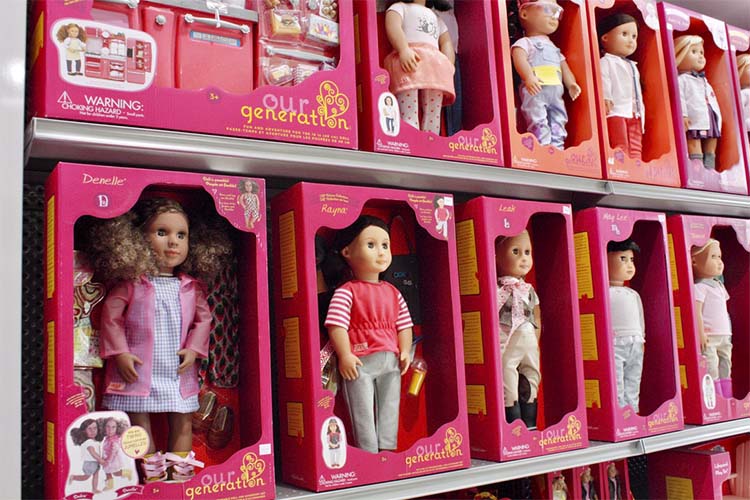
The Our Generation Doll Display at OJeux in NDG. Photo by Olivia Johnson.
Dautin says the demand reflects the city’s multiculturalism.
“There’s a big difference between the demand coming from Montreal and that of other places in Quebec,” says Dautin. “In Montreal we’re a very diverse population from many different cultures, but the second you leave Montreal to go somewhere else in Quebec, there’s a much less diverse population. So the supplier we buy from sells a lot of white dolls, but stores here in Montreal in particular ask for a lot of multicultural dolls.”
Local doll-making businesses have flourished thanks to this demand from our city’s multicultural population.
One of these businesses is called Les Poupées d’Or, founded by Bégon-Leroy. She taught herself how to make dolls as a hobby, and with the help of YouTube, she started selling them in 2017. Her company focuses on Afrocentric dolls with textured hair and handmade clothing.
Learn more about Orphanie Bégon-Leroy’s doll business, Les Poupées d’Or. Video by Olivia Johnson.
The inspiration for her company started when she heard of an experiment called the Doll Test, conducted by Kenneth and Mamie Clark in the 1940s.
Children of different cultures aged three to seven were presented with four dolls, identical except for skin tone. They were then asked which doll they preferred and the majority of them preferred the white doll and gave the black doll negative qualities.
“Already from that early on they had been formatted to think ‘This is nice, this is not nice. This is what beautiful is and this is what ugly is,’” says Bégon-Leroy. “So that’s when it came to me that children are impacted from their early childhood, from the get-go and they all play with dolls. It’s something that a lot of children play with and that already starts to shape the way they perceive the world.”
She hopes her line of dolls will help fill the gap in the market for dark-skinned dolls with realistic textured hair.
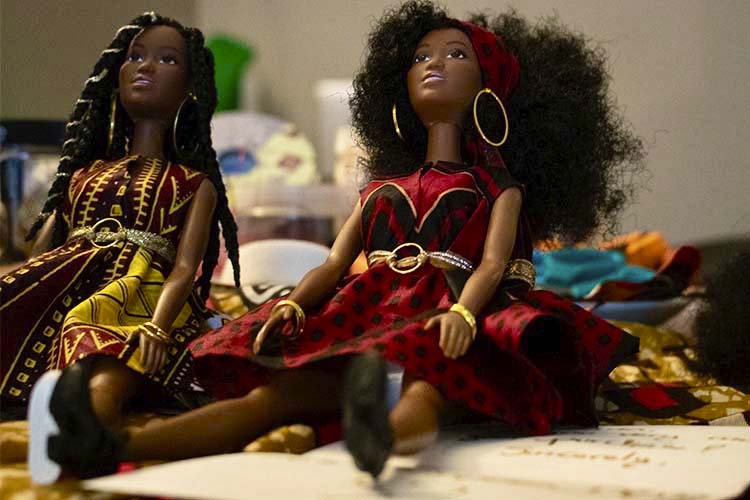
Personalized dolls created by Orphanie Bégon-Leroy are “designed to reflect the essence of Afrocentric beauty.” Photo by Deborah Barrasso.
Psychologist Dr. Amber Hewitt specializes in child and adolescent mental health. She praises entrepreneurs like Bégon-Leroy.
“The more children see themselves positively represented in the world around them is a step in the right direction,” says Hewitt. “You are seeing young entrepreneurs and entrepreneurs of colour not waiting for the industry to make changes but starting their own companies.”
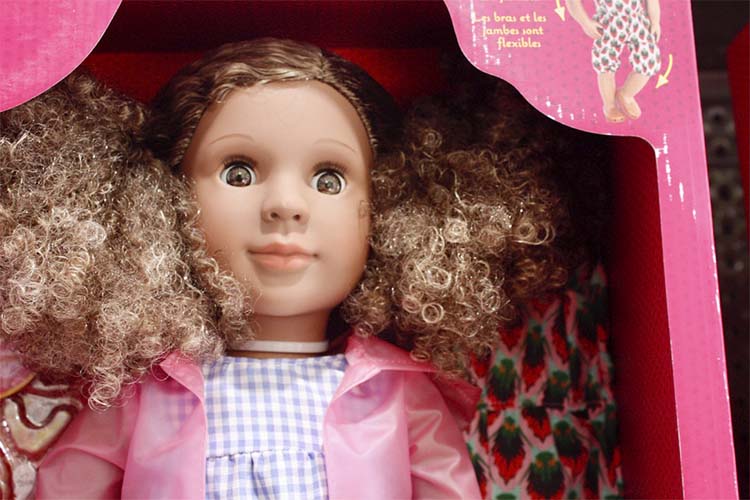
Denelle, one of the Our Generation dolls which can be found at OJeux, has shoulder-length, curly light-brown hair and a deeper skin tone. Photo by Olivia Johnson.
Aaron Wade, director of public relations for Canspan BMG marketing, says that diverse dolls have been around for a long time but that sales started to take off in 2015.
“It was around the same time that we started to see a growing trend of diversity in film and popular culture,” says Wade.
The toy industry followed suit.
According to the NPD Group’s U.S. toy retail tracking service, the U.S. toy industry in general was down four per cent from 2018 to 2019. But the sub-category of fashion dolls was still growing.
“The biggest and most positive thing in increased diversity is that Mattel keeps putting money into it,” says Wade. “They keep putting money in it and they continue to add material to it. People out there are buying those dolls.”
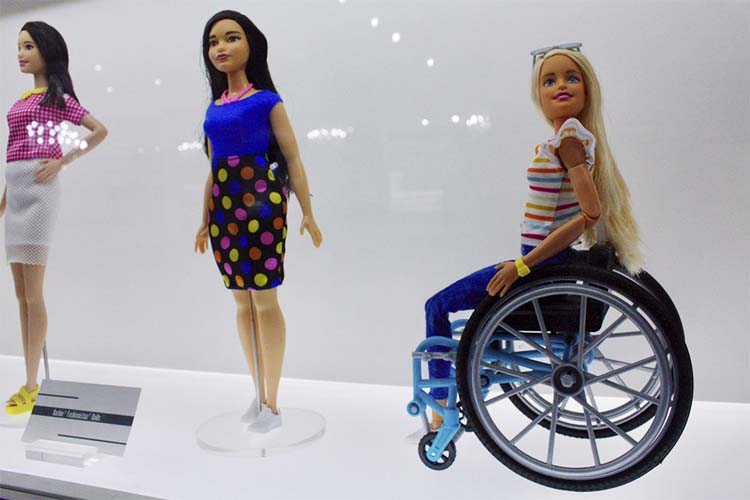
In 2020, Mattel launched a new set of Barbie Fashionistas which included dolls with prosthetic limbs, alopecia and vitiligo. According to USA Today, one of the top 10-selling Fashionista Barbies in 2019 was the wheelchair Barbie. Photo by Olivia Johnson.
While increased diversity of dolls has helped the market flourish, Wade says what’s most important is the effect it has on the children who play with them.
“It is important for children to see themselves reflected in dolls because it helps to affirm their identities. The absence of diverse dolls and toys sends the message that not all colors, shapes sizes, genders are valued,” says Dr. Hewitt. “Children of colour start to notice differences in skin color at a very early age and these same children can start to internalize representations of beauty portrayed in the media,” she says.
When Bégon-Leroy had her daughter, who is now a year old, she wanted to do everything she could to make her feel proud and beautiful in her own skin.
“I try to expose her as much as possible to representation, to people or to images that look like her, that reflect who she is because I know once she leaves our doorstep, it’s gonna be a completely different world out there,” she says. “I think it’s more important to reinforce within her this pride for her culture, to just know that she’s beautiful and that she doesn’t have to look a certain way to be considered beautiful and just to build her self-esteem already from the get-go.”
Bégon-Leroy understands the impact media has on the minds and self-esteem of young minorities. She uses her art, creating dolls, as a way to counter the negative.
“I think that the media and the society in general has done a great job at letting us know like, this is your role, this is your place, this is what you have to look like, this is how you have to sit, this is the little space that we gave you and you have to stay there and do what we tell you to.” she says. “I think it’s our job to just say, you know what, no.”
